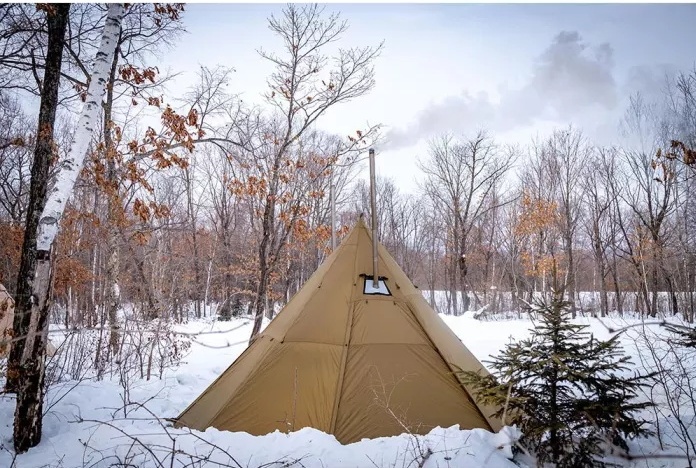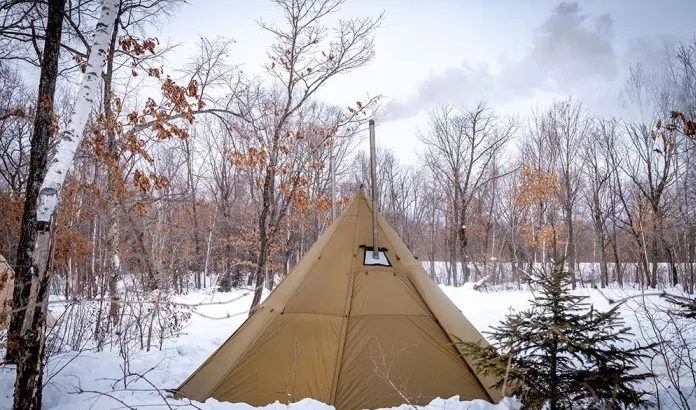Camping can be a challenging and exhausting task for inexperienced campers. It may be more laborious to have to repeat the task after the attempt fails. The key to setting up a tent lies in its location, location, and location – were setting up a tent will have a significant impact on the comfort and safety of the campsite. Follow these tips to find the ideal campsite, make your camping trip go smoothly, and avoid any catastrophic setup problems.

1. Select Flat Ground
The most important thing to look for when looking for the best campsite is the flat ground, because it may mean the difference between a good night’s sleep and wake up in a nightmare environment. Where pine needles, sand, grass, or soil are scattered, rather than where rocks and tree roots are scattered, you are more likely to get a comfortable sleep. Built campsites usually maintain a flat and safe place to set up tents, usually with streams or grasslands as the scenic background. When you find a large and comfortable place, enough for your tent, use a small rake or similar tool to brush away any sticks, stones, or branches that might poke you while you sleep. If you don’t have a rake, you can use your feet to clean up your debris. Before setting up the tent,
2. Avoid Hills
If possible, please avoid camping anywhere on the mountain. Whether you are on the top of the mountain, at the bottom, or in the middle, all these positions will pose a threat to your safety. Novice campers may mistakenly think that camping in the valley at the foot of the mountain is a good idea because it can protect against wind and sun. But if it rains, you may wake up in a puddle, or worse in a deadly flash flood. Sometimes there is no flat ground, and you may have to adapt to slightly sloping ground. Make sure you place your head on the uphill slope with your feet pointing downhill. If you lie on your side on a slope, you will inevitably roll to the side of the tent and press your body into the tent wall material, resulting in the possibility of getting wet by condensate.
3. Consider Sun Exposure
Always look for areas close to shade. Tents placed in direct sunlight will become like saunas. Some tents may be damaged or prematurely aged by the harmful rays of the sun, so be sure to check the tent care instructions before venturing into the wilderness.
4. Consider Storm Dew
Look for campsites with natural windbreaks. No matter where you camp, you should try to place your tent away from the wind to properly protect yourself from strong winds. If your tent is blowing in the wind all night, it’s hard for you to have a good rest. In addition, if your location is facing the wind, your tent will feel very cold due to the poor insulation effect.
5. Close To Water
Some campers think it is safer to camp near the water source in case they run out of water. However, this may not be the safest option. There are several reasons for this.
1. if it rains and mountain torrents wash away your site, it may be dangerous to camp too close to the watercourse.
2. camping too close to the water will pollute the water source. Many established campsites are 100 feet or more from the water source.
With this in mind, keep your campsite close to the water source, but not too close to the water source.
6. Camping In The Forest
The forest area is a hot spot for camping. Many developed tent sites will be flat and designed for tents. Websites in remote areas need more consideration. Most developed sites will have harder soil and require strong wooden stakes to keep the tents grounded. Forests have many soil types. Some soils are difficult to penetrate with wooden piles, while others are fertile and cannot be well fixed with wooden piles. These soil problems are more common in remote areas. Do some research on forest soil types to ensure that you have the right shares.
7. Camping In The Snow
When camping in the snow, if there is fresh deep snow, please avoid choosing a camping site close to the dense trees, which may drop in the wind or in the warm temperature during the day. In addition, in mountainous areas, avoid avalanche-prone bowls and slopes. Stay in the tree and tilt up from the bottom of the bowl. When you find the right place, use snowshoes or skis to tamp the ground to form a solid surface. Winter weather conditions may vary from place to place, but it is always safest to buy a 4-season or winter tent, so as to properly prevent snow and strong wind in exposed tent sites. If you want to camp in deep snow, a snow stake may be a good accessory.
8. Don’t Leave Your Mark On This Land
In order to let everyone enjoy the gifts of nature in the coming years, please remember your environmental responsibility. Properly dispose of your garbage and leave the campsite without leaving any traces of your visit. As a general rule of thumb, do not leave your footprints on the earth.
